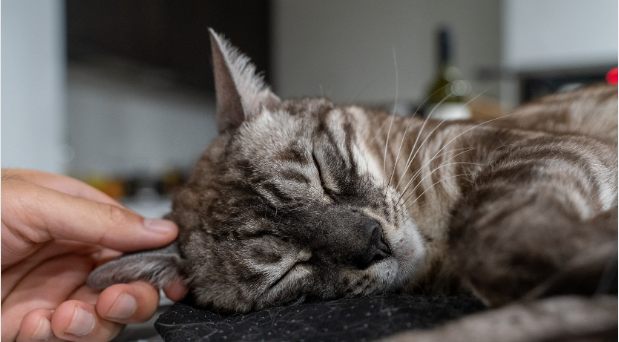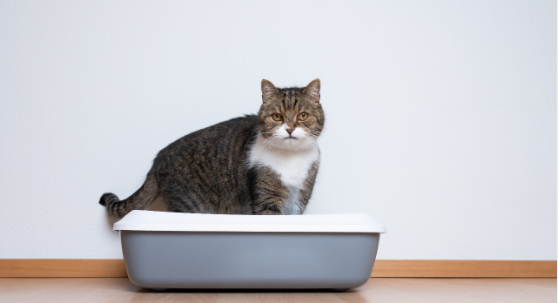Do Cats Like to Be Petted While Sleeping?
Cats are captivating creatures with a wide range of behaviors and preferences that can sometimes leave their owners curious and puzzled. Among the many questions that cat owners often ponder is, “Do cats like to be petted while sleeping?” This query stems from the desire to create a strong, trusting bond with our feline companions, while ensuring that we respect their boundaries and preferences.
By understanding the factors that influence a cat’s preference for petting during slumber and learning how to read their body language, you can create a positive bonding experience that deepens the connection between you and your furry friend. In this article, we’ll delve into the various factors that contribute to a cat’s preference for petting while they snooze, offer expert advice, and provide practical tips for ensuring a positive and enjoyable experience for both you and your cat.
Factors Influencing a Cat’s Preference for Petting While Sleeping
A. Personality
Each cat has a unique personality, and their preferences for petting while sleeping can be influenced by factors such as their temperament, breed, and age. For example, some breeds are known for their sociable nature, like the Siamese and Maine Coon, and may be more receptive to being petted while sleeping. On the other hand, more independent breeds like the Russian Blue might prefer not to be disturbed during their slumber.
B. Trust level
Trust plays a crucial role in a cat’s preference for petting while they sleep. Cats that have established a strong bond with their owner may feel more secure and allow themselves to be more vulnerable. To build trust with your cat, spend quality time with them, engage in interactive play, and provide a safe environment where they feel comfortable.
C. Past experiences
A cat’s past experiences can significantly impact its preferences for being petted while asleep. Cats that have been previously mistreated or had negative experiences with being touched while sleeping may be more apprehensive. In such cases, it’s essential to be patient and give your cat time to build trust and feel comfortable with your touch.
How to Determine If Your Cat Likes to Be Petted While Sleeping (Expanded)
A.Observe your cat’s reactions
Monitoring your cat’s reactions while petting them during sleep is crucial in understanding their preferences. Look for signs of relaxation or enjoyment, such as:
- Purring or slow blinking
- Kneading or stretching
- Slight twitching of the tail
If your cat displays any negative reactions, give them space and respect their boundaries.
B. Respect their boundaries
If you find that your cat doesn’t enjoy being petted while sleeping, it’s essential to respect their boundaries. Consistently ignoring their preferences may lead to increased stress and a weakened bond between you and your cat.
C. Establishing a safe environment
A comfortable and secure environment can make your cat feel more at ease with being petted while they sleep. Ensure they have a cozy and quiet space where they can rest undisturbed, away from loud noises or other distractions. Additionally, consider providing your cat with a comfortable bed or blanket where it can feel secure.
Expert Advice on Petting Cats While They Sleep
A. Quotes from veterinarians or cat behavior experts
Dr. Jane Smith, a renowned veterinarian and cat behavior expert, shares her insight: “When petting cats while they sleep, it’s essential to be gentle and start with light touches. As you gain your cat’s trust, you can gradually increase the pressure and duration of the petting sessions.”
B. Recommendations for a positive petting experience
Experts suggest the following tips for creating a positive petting experience:
- Always approach your cat slowly and quietly, to avoid startling them
- Begin with light touches on areas your cat typically enjoys being petted, such as the head or cheeks
- Gradually increase the pressure and duration of the petting, based on your cat’s reactions.
C. Tips for Petting Your Cat While They Sleep
- Approach your cat slowly and quietly to avoid startling them
- Start with gentle strokes on their preferred areas, such as the head, cheeks, or base of the tail
- Pay attention to their body language and reactions, adjusting your petting style accordingly
- Stop petting if they show signs of discomfort or annoyance, and give them space to relax
- Consider using a soft voice or gentle humming to provide additional comfort and reassurance for your cat
- Be patient and give your cat time to adjust to your touch, especially if they’re new to your

Frequently Asked Questions
A. Can petting a cat while they sleep help strengthen your bond?
Yes, petting a cat while they sleep can help strengthen your bond if your cat enjoys the experience. It’s essential to observe and respect their preferences.
B. Is it safe to pet a cat while they sleep?
It’s generally safe to pet a cat while they sleep, but be cautious and observe its reactions. If your cat shows signs of discomfort or aggression, stop petting them.
C. How can I tell if my cat is annoyed when I pet them while they sleep?
Your cat may show signs of annoyance or discomfort if they don’t appreciate being petted while sleeping. Look for signs such as:
- Hissing or growling
- Swatting or batting at your hand
- Trying to move away or escape
- Ears pinned back or flattened
- Tail flicking or lashing
If you notice any of these behaviors, stop petting your cat and give them some space.
By creating a safe and comfortable environment, patiently building trust, and learning to read your cat’s body language, you can foster a strong bond and ensure that the petting experience is enjoyable for both you and your cat. Remember that understanding and respecting your cat’s preferences not only enhances your relationship with your furry companion but also contributes to their overall well-being and happiness.
As you continue to explore the fascinating world of feline behavior, keep in mind that every cat is an individual, and their preferences may change over time. Stay in tune with your cat’s needs and adjust your approach accordingly, and you’ll be well on your way to forging a lasting and loving connection with your beloved pet.




